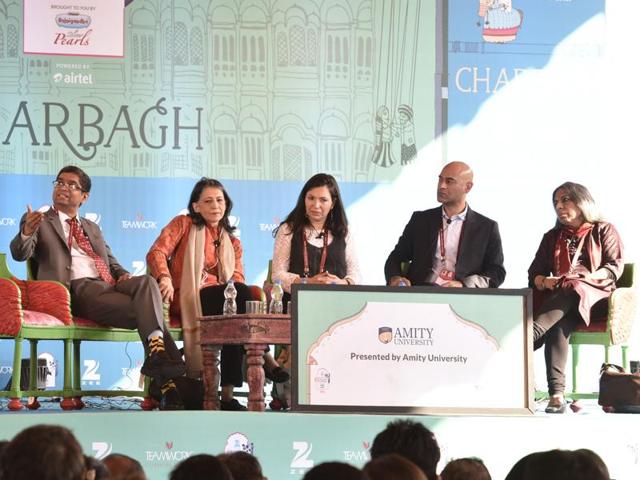JLF 2016: We need new narratives on Partition, says Ayesha Jalal
Setting the agenda for a session entitled The Great Partition at the Jaipur Literature Festival in Jaipur on Monday, moderator Vazira Zamindar, associate professor of history, Brown University, said the event raises difficult questions about 20th century nationalism, minority rights, gender violence and massive displacement.
The Partition remains one of the most contentious issues in the subcontinent’s history. Nobody expected it to be so bloody — it was supposed to be an answer to the dreams of Muslims and Hindus, who had been ruled by the British for centuries. But following the Lahore Resolution of 1940 and the decision to press for an independent Pakistan, tensions increased and as the summer of 1947 approached, all hell broke loose. The violence was brutal led to a divide between India and Pakistan that still remains a root cause of many contemporary problems.

Setting the agenda for a session entitled The Great Partition at the Jaipur Literature Festival in Jaipur on Monday, moderator Vazira Zamindar, associate professor of history, Brown University, said the event raises difficult questions about 20th century nationalism, minority rights, gender violence and massive displacement.
“Initially, it was a minority rights movement but it actually aggravated the issue of minority rights rather than solving it,” said Ayesha Jalal, Mary Richardson Professor of History at Tufts University.
Speaking on the violence that ensued around that time and the use of ‘madness’ as a trope to explain the brutality especially in Punjab, Nisid Hajari, author of Midnight’s Furies, said that there are two ways of explaining the people’s reaction to Partition.
Read: To resolve Kashmir issue, Congress-BJP talk must: Kulkarni
“One could be that they were misguided and the other is madness. In 1947, violence was not spontaneous. Small hardcore groups often armed and trained would go around and whip up passion. Then, a mob mentality takes over. The seed of violence that comes from these organisations is critical to setting off the wider waves of violence”.
Venkat Dhulipala, associate professor of history at the University of North Carolina Wilmington added that incendiary speeches that were made between 1940 and 1947 on the transfer of population were one of the key triggers of violence.
“The violence was not due to religious reasons but due to property issues,” said Jalal.
Adding to the explanations on why such violence took place, author Urvashi Butalia said the violence was not only organized and a result of some kind of madness, but had gender dimensions too. “Had families not been inherently violent against women, then such extreme acts of violence would not have happened against women. Additionally, when we talk about minorities let’s not talk just about Hindus, Muslims and Sikhs, but also Dalits, women, hijras. All were affected by the Partition; what about them?”
She added that much more research needs to be done into Partition histories. “The other unfortunate story is that despite so much scholarship our day-to-day conversation on the Partition is absent,” Butalia argued.
Read: The problem with India is its extreme inequality: Piketty at JLF 2016
On the issue of narratives, Yasmin Khan, associate professor of history, University of Oxford, said there is a risk of replaying the same tropes and that individual stories can make a difference.
Agreed Jalal: “A recent Gallup poll said that 39% Pakistanis claim to have heard of an incident in their family or acquaintances’ family in which a Muslim’s life was saved by a Hindu or a Sikh during Partition. These narratives should also be brought to the forefront.”
Responding to an audience question on the role of political leaders in the violence, Khan said that the leaders can’t be blamed as they were human and were exhausted by the Independence struggle. There was also pressure from their followers.
Read: JLF 2016: If I want to eat beef I will, says Barkha Dutt
“Let’s not forget that the leaders were also representatives of networks,” she said.
On how to heal the scars of Partition, Butalia said the three countries must invest in a Partition museum. “There are many artists working on the idea. I would love to see the museum being built at Wagah,” she said.
In conclusion, Jalal said the time had come to go beyond finger pointing and move towards healing and discovering new narratives on Partition. “We need to move forward to live together and prosper,” she said.
For more JLF 2016 stories click here.





